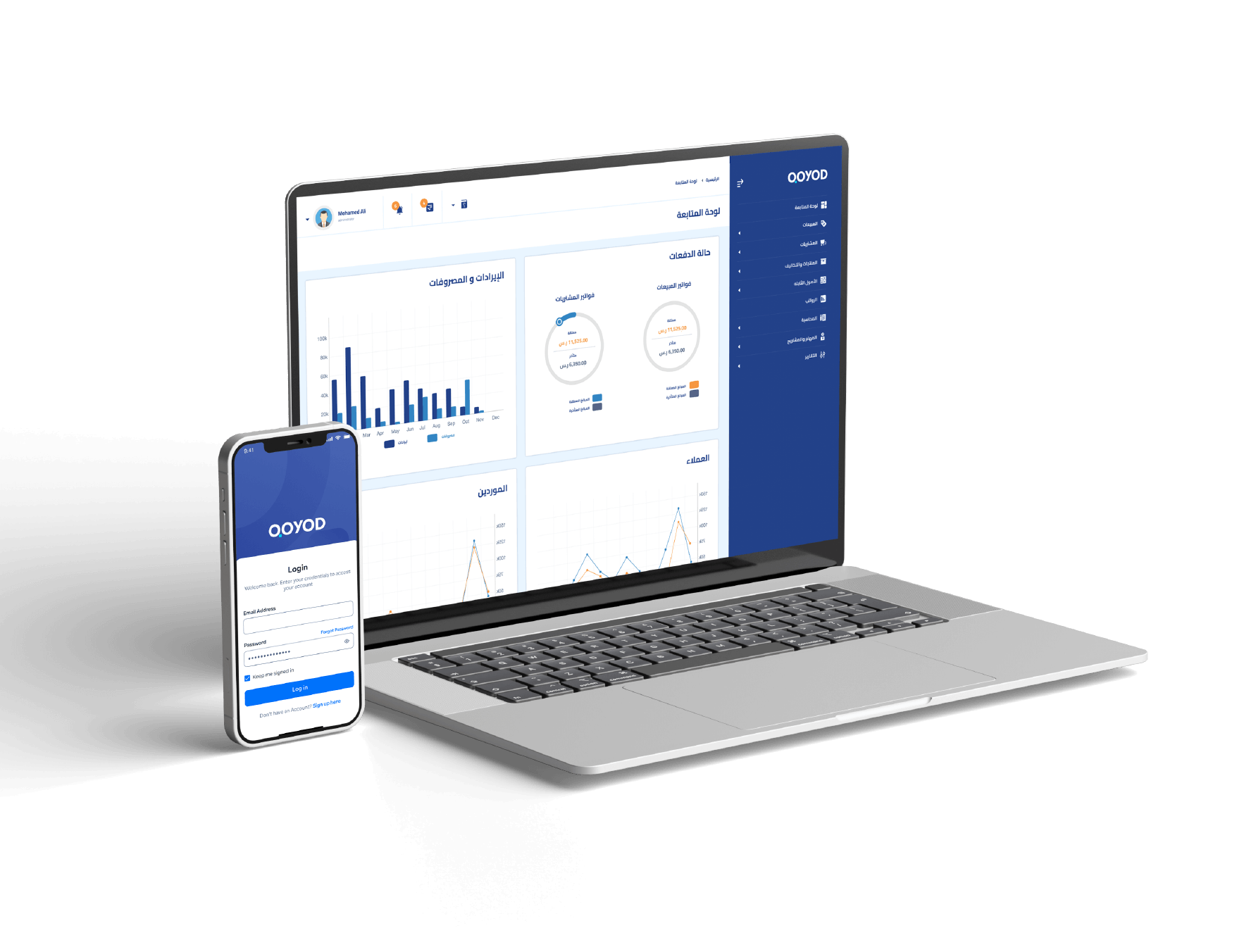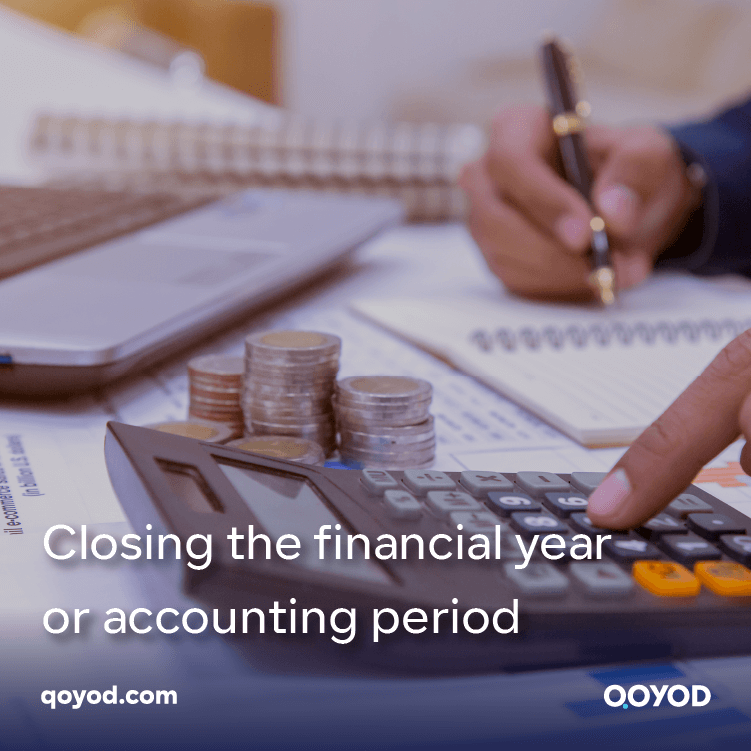In the contemporary business world, managing the financial year plays a vital role in the success of any organization. Every end of the financial year is an opportunity for evaluation, analysis, and planning, and it provides the ideal opportunity to set goals and make informed strategic decisions. But what are the basic steps that accountants and financial managers must take to be able to successfully close the financial year? In this article, we will explore together the most important steps that must be followed to end the accounting period in an effective and orderly manner, and we will also review the crucial accounting measures that must be taken, starting from reconciling accounts and verifying balances all the way to submitting comprehensive financial reports. Whether you are a professional accountant, a financial manager, or even an aspiring entrepreneur, this article will provide you with the necessary guidance to organize and implement this process successfully, so follow along with us.
What is the closing of the fiscal year?
If you’re wondering: What is financial close? In short, it is an important process in the management of companies and commercial institutions, during which the company’s accounts and financial statements are reviewed and settled with the aim of providing detailed reports that reflect the company’s financial position during a specific period of time, usually a financial year.
This process aims to achieve several main goals. First, it helps in evaluating the company’s performance, knowing whether it achieves the specified financial goals, identifying areas that need improvement, and also providing accurate information to shareholders, investors, and other external parties to understand and evaluate the company’s condition and make appropriate financial decisions.
How is the financial year closed?
Closing the financial year is an important process carried out by businessmen and accountants to complete the annual financial cycle and prepare the company’s final financial reports. It may seem difficult, but by using an accounting program such as Qoyod, it will make it much easier for you. If you are wondering, what are the steps for closing the accounting period through this program? They are as follows:
Prepare basic records.
The process begins with preparing basic records and updating all financial statements made during the year. It is worth noting that the status of all invoices from sales and other transactions must be followed up, income data updated, and recorded, in addition to collecting all receipts and invoices and recording them in one place.
It is also necessary to calculate salaries, bonuses, and increases made during the fiscal year and ensure that the bank account is balanced.
Do not mix personal transactions with the company.
You should avoid mixing personal expenses with those related to the company, and it is advisable to conduct a bank statement throughout the year to track all expenses and identify the company’s expenses separately.
Controlling bank loans and interest
If you have borrowed from the bank to expand or develop your business, you must adjust the loans and the interest due on them. You should also record every payment you send to repay the loan, record the accrued interest, and pay it on time. It is worth noting that you can distribute the payments between the loan interest payments to reduce the percentage due over time.
Don’t forget about late income.
Sometimes, you may have projects or services that will get paid at a later time. It is important to create invoices for each project or product, even if payments are deferred. This type of accounting is known as accrual accounting, and income can be recorded immediately or at the time it is earned, but it is best to record it at the due time to better organize the accounts and complete the closing of the financial year correctly.
Control your expenses.
One of the important things in closing the financial year is controlling expenses, as you may receive an invoice from a supplier in the last moments before the end of the year. In this case, you must record them and include them in the expenses for the current year. It is important to record all expenses on time to avoid confusion and to ensure that the accounting period is closed correctly.
Recording prepaid expenses
In some cases, you may be dealing with prepaid expenses, such as paying office rent several months in advance. When this happens, the fiscal year is completed before the prepayment period is exhausted. The remaining months must be rolled over to the new fiscal year to ensure the fiscal year is closed properly.
Taking into account inventory
If you work for a manufacturing company or own an online store, inventory management is an important part of closing the accounting period, and there are some important steps to control inventory, such as:
- Follow the perpetual method: You must constantly track all inventory balances and record them when any changes occur in the inventory.
- Periodic method: This method relies on conducting a physical inventory of inventory, accurately updating the inventory account, and calculating the costs of goods over a specific period of time.
- Record purchases in a separate account: All inventory-related purchases must be recorded in a separate account to be able to properly track costs.
- COGS Method: The COGS (Cost of Goods Sold) method is used when there is no apparent change in inventory sales between certain periods.
- This method records all changes in the cost of goods sold, calculating the actual cost of the goods sold.
How to close final accounts with examples
Accounting software automatically processes the final accounts for you, but if you do not have accounting software, you must do this manually each accounting period by closing your income and expense accounts and transferring the balances to an account called the “Income Summary Account.”
Close revenue accounts.
You reduce your revenue accounts by debiting them, as you must debit your revenue accounts to reduce them, which means you must also credit your income summary account.
| credit | debt | notes | account | date |
| X | Close journal entries | profit | XX/XX/X | |
| X | Income summary |
Close expense accounts.
Because expenses are reduced by credits, you must credit the account and debit the Income Summary account.
| credit | debt | notes | account | date |
| X | Close journal entries | Income summary | XX/XX/X | |
| X | Expenses |
Close your income summary account.
Whether you credit or debit your income summary account depends on whether your revenues are greater than your expenses.
If your revenues are greater than your expenses, you will debit your income summary account and credit your retained earnings account. This therefore increases your retained earnings account.
| credit | debt | notes | account | date |
| X | Close journal entries | Income summary | XX/XX/X | |
| X | retained earnings |
If your revenues are less than your expenses, you should credit your income summary account and debit your retained earnings account; thus, this reduces your retained earnings calculation.
| credit | debt | notes | account | date |
| X | Close journal entries | retained earnings | XX/XX/X | |
| X | Income summary |
Closing profit accounts
If you pay dividends during the accounting period, you must close your dividend account now that the income summary account is closed. You can close your earnings account directly using your retained earnings account.
Debit your retained earnings account and credit your dividend expenses, thus reducing your retained earnings account.
| credit | debt | notes | account | date |
| X | Close journal entries | retained earnings | XX/XX/X | |
| X | Dividend |
How to identify financial periods in the Qoyod program
In the accounting program “Qoyod,” you can identify financial periods and prepare them easily by following the following steps:
Access the General Settings page: Access the General Settings page from the side drop-down menu, find the “General Settings” option, and select it.
Uploading the facility’s logo and entering contact information: You can start setting up your account by uploading the facility’s logo and entering your contact information.
Enter your address, phone number, email, and any other relevant information.
Entering tax information: You can also enter the facility’s tax information, such as the tax number and type of tax entitlement.
Specifying the beginning of the fiscal year and closing date: On the General Settings page, you can specify the beginning of the fiscal year, the closing date of the fiscal year, and the accounts.
Important
When specifying a specific closing date, you must have finished entering all transactions related to the previous period. If you have not finished entering these transactions, they will not be allowed to be entered into the system.
Common questions.
What accounts are closed at the end of the financial year?
At the end of the fiscal year, many financial accounts that are used to track the financial activities of companies and institutions are closed, the most important of which are:
Nominal accounts
Among these nominal accounts that are closed are revenue accounts and current expense accounts.
When these accounts are closed, their balances are reset to zero, so this means that all figures associated with income and expenses return to zero. This makes it easier to carry these numbers over to the next financial period. Therefore, new accounts are returned for the new fiscal year to record new revenues and expenses.
Making adjustments to the statement of financial position
In addition to closing nominal accounts, adjustments are also made to the statement of financial position. These adjustments include: preparing entries to adjust inventory in order to accurately represent the balance of good debts of the company or institution, as inventory values are adjusted according to the changes that occurred in the current financial period, which helps determine the value of assets and debts correctly.
When do we close entries?
Closing entries are accounting procedures that take place during the closing of the company’s fiscal year and aim to prevent the entry of any new transactions during the annual closing process. This process is important to ensure the accuracy and reliability of the financial accounts and to achieve the required balance.
The process of closing entries is facilitated by using accounting programs, such as the Qoyod accounting program, as it provides an easy-to-use interface that automates many calculations. This helps save the accountant’s time and effort.
What are the steps for closing entries?
One of the basic steps in closing entries is closing temporary nominal accounts. This is done by creating a trial balance to record the closing of the revenue account and other related accounts. This process documents and records the accounting entries necessary to achieve balance and accuracy.
After that, the business results are closed, whether they are profits or losses in the owner’s current account. It is worth noting that this procedure aims to record the final business results and determine the profits that will be transferred to the owner or reinvested in the company in the next financial period.
Conclusion
The steps to close the fiscal year are a crucial part of the commercial and administrative process. They provide companies and institutions with the necessary tools to evaluate their performance and analyze their financial results comprehensively. These steps allow senior leadership to make informed strategic decisions and identify the strong and weak points in their business. It is worth noting that closing the accounting period enhances transparency and credibility in financial reports, provides an opportunity for continuous improvement and development of internal processes, and also contributes to enhancing trust between the company, shareholders, and business partners. Therefore, companies and institutions must prepare and follow the necessary steps to close the financial year carefully and accurately and make optimal use of this opportunity. It paves the way towards continuous improvement and sustainable financial success.
Qoyod improves accounting management for SMEs. The software automates the creation of entries, thus avoiding time-consuming manual entries. The closing of your accounting period is then carried out more easily and in full compliance. It also provides all its clients with electronic invoice systems as well as point-of-sale systems, warehouses, customers, and so on.
After knowing the steps to closing the financial year, try Qoyod now for free for 14 days, and the magic begins from there.

Join our inspiring community! Subscribe to our LinkedIn page and Twitter to be the first to know about the latest articles and updates. An opportunity for learning and development in the world of accounting and finance. Don’t miss out, join us today!




